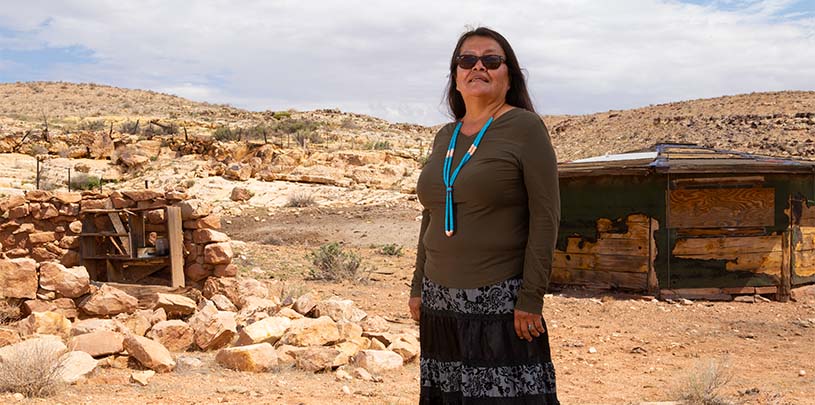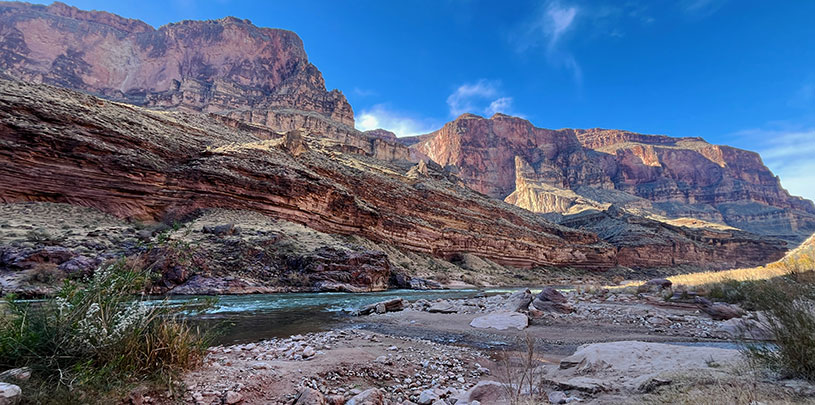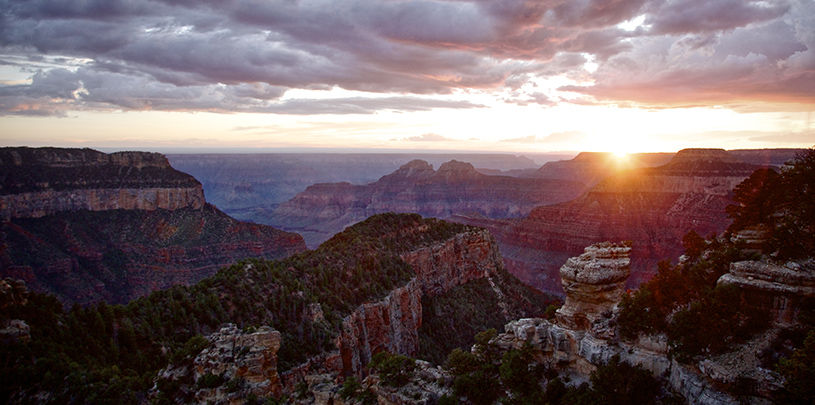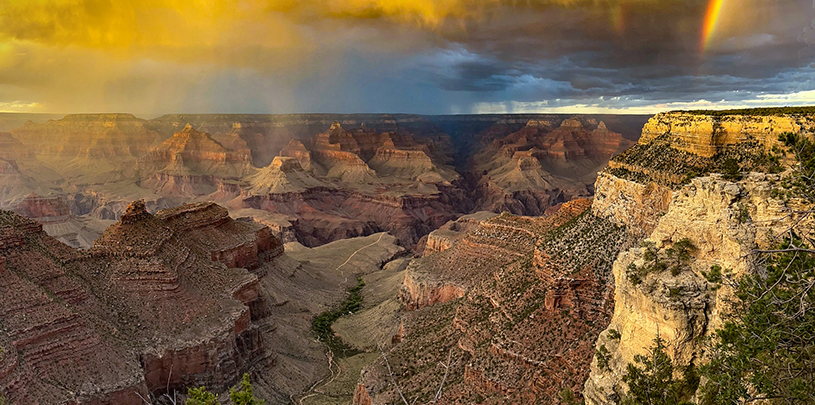Delores Wilson-Aguirre grew up herding sheep on the rim of the Grand Canyon above the confluence of the Little Colorado and Colorado rivers. Without easy access to the river water thousands of feet below, Delores and her family relied on earthen dams, springs, puddles, and potholes. They frequently moved themselves and their livestock between seasonal water sources. In the spring, her family would plant fields in Kerley Valley, near Tuba City, Arizona. Come summer, they’d return to their sheep camp with a hearty vegetable harvest. During times of drought, they would move closer to Highway 89, where they had access to water pumps.
“We moved all over the place here with our sheep. We lived in canvas tents, and we used to make shades out of wood. Sheep was our life, land was our life. That’s how we grew up,” she said.
The legacy of the Bennett Freeze
Wilson-Aguirre thought moving around without a permanent home was normal, but it was the early 1970s during the Bennett Freeze. This policy, which the U.S. government imposed while negotiating reservation boundaries between the Hopi Tribe and Navajo Nation, banned Wilson-Aguirre’s family and thousands more from fixing roofs, building houses, constructing water lines, and repairing roads — for over 40 years. When President Obama finally lifted the ban in 2009, the freeze area — larger than the state of Delaware — was four decades deep in disrepair.
“When my son asks, ‘why did you have sheep?’ I tell him we survived on sheep all those years — my ancestors, my grandma. And that’s how we are here. We didn’t have electricity, but we made it.”
Wilson-Aguirre remembers hauling wood in the summer to prepare for the cold months ahead. In the winter, camped above the confluence, they would melt snow for drinking water and to wash clothes. Often, they took corn pollen to the rim of the confluence to say their prayers. Wilson-Aguirre said the confluence is like their church.
“We offer prayers to the water and the canyon down there. That’s where our lives began. One river is female, the other is male. They come together, it makes life,” Wilson-Aguirre said. “Thinking about my family, my grandma, what life was like way back. We’ve survived so many years of using our prayers.”
The confluence, thrown into the spotlight
After the Bennett Freeze was lifted in 2009, Wilson-Aguirre said she expected local leaders to start much needed and long-awaited improvements, like running electric lines and paving roads. Instead, Phoenix-based developers started scheming to build a mega-resort on Navajo land above the confluence. The so-called “Grand Canyon Escalade” project also included a rim-to-river tramway that could have dumped 10,000 people a day at the confluence of the Little Colorado and Colorado rivers, a culturally significant place for many tribes in the Grand Canyon region.
“We’ve been living in the Bennett Freeze for years and years and all of a sudden this idea of a tram is tossed in, and it’s a big deal,” Wilson-Aguirre said. “It was just a money-making scheme. A huge elevator going into the canyon, and a few buildings on top,” Wilson-Aguirre said. “The locals were never involved in the planning. It was tossed on us. It was for outside interests to make money.”
Wilson-Aguirre’s family and neighbors formed a group called Save the Confluence, a grassroots organization opposed to the Escalade development.
In the ‘60s and ‘70s, Wilson-Aguirre said they lived alone out there and focused solely on herding sheep and surviving. They hardly ever saw outsiders and took care of one another.
“It seemed like nobody knew we existed back then. And all of a sudden, during the proposal for the Escalade, it seemed like we existed.”
The developers promised jobs, electricity, and paved roads. And for years, they lobbied the Navajo Nation to approve the Escalade development, despite opposition from the Save the Confluence families, Navajo citizens, the Hopi and Zuni tribes, and many other Native peoples with ties to the Grand Canyon. Finally, in 2018, the Navajo Nation voted down a bill that would have paved the way for the Escalade development.
“For years of fighting, we succeeded. But we knew after that day there would be more developers coming, so how do we save the land? How do we protect our religious site?”
What now?
Looking forward, Wilson-Aguirre would like to see the community — the people who have lived above the confluence for generations — be involved in the planning. Not Phoenix developers or others from distant locales who are looking to profit off sacred land.
But the Escalade development has left scars.
“Now, we’re just suspicious every time someone talks about infrastructure or running electric lines out this way. The plan to build the tram kind of ruined it.” Wilson-Aguirre said. “Personally, every time there is a plan for the area, I hesitate. And I wonder who’s involved.”
She would also like to see more education about the people whose livelihoods and cultures are tied to the Little Colorado River and confluence area.
“We need water. We need electricity. We need roads. And most of all, hopefully, to come up with protection of our sacred sites,” she said. “Respect needs to come back to the community.”
Hear more from Delores in “Lifeways of the Little Colorado River” ›
Guest post by Sarana Riggs
Sarana is from Big Mountain, Arizona, and is a member of the Navajo Nation. As an independent consultant, she educates about and advocates for cultural and environmental protections for all Indigenous peoples in the Southwest.




